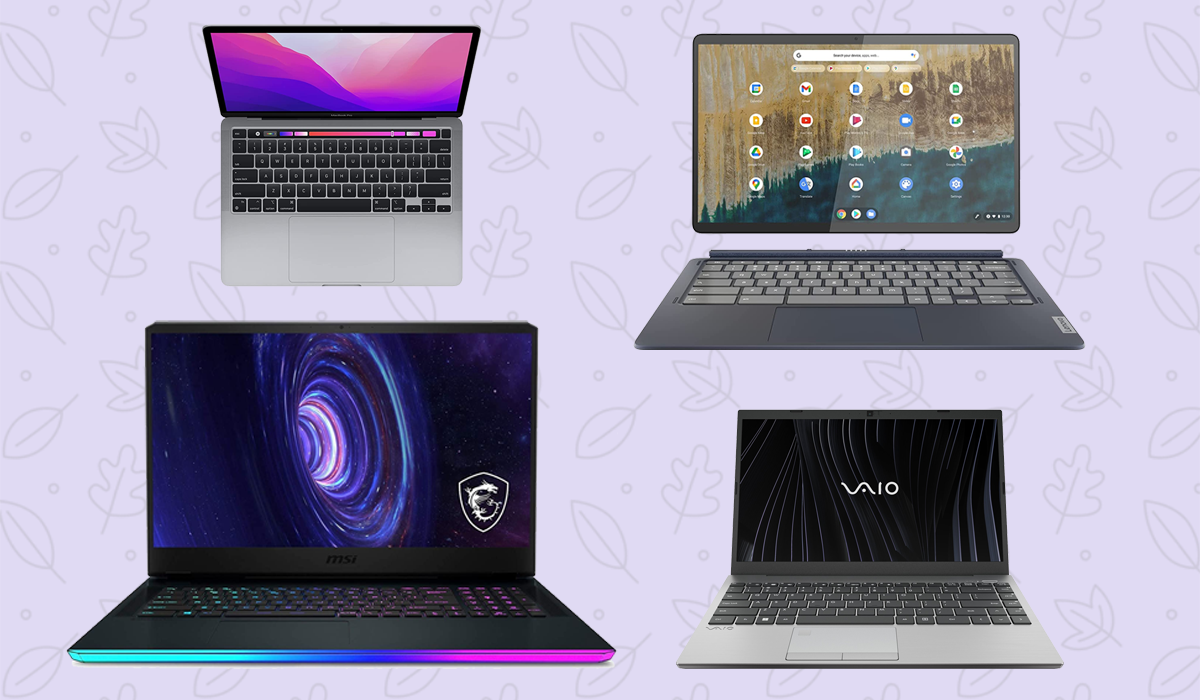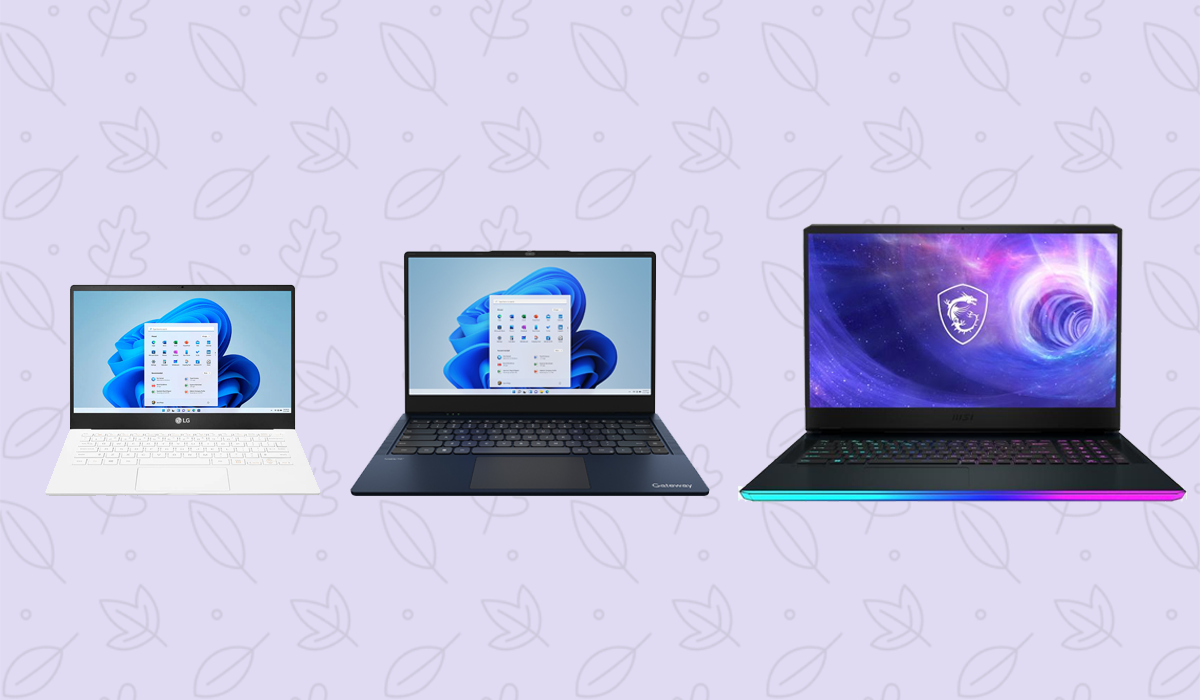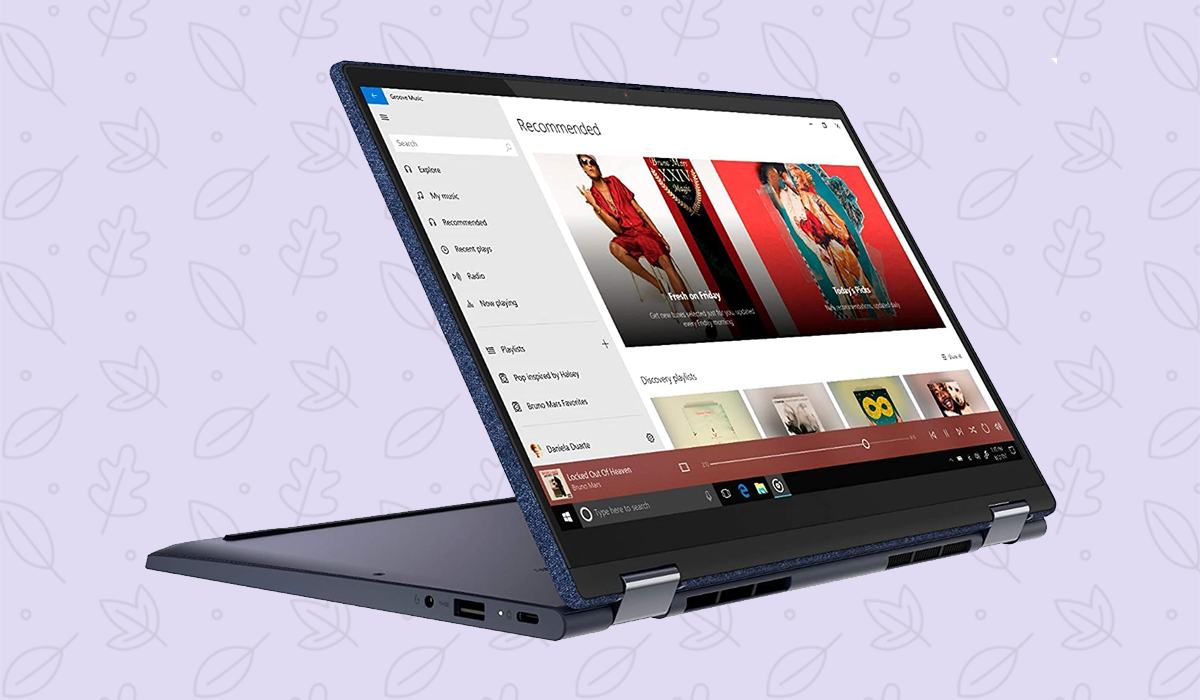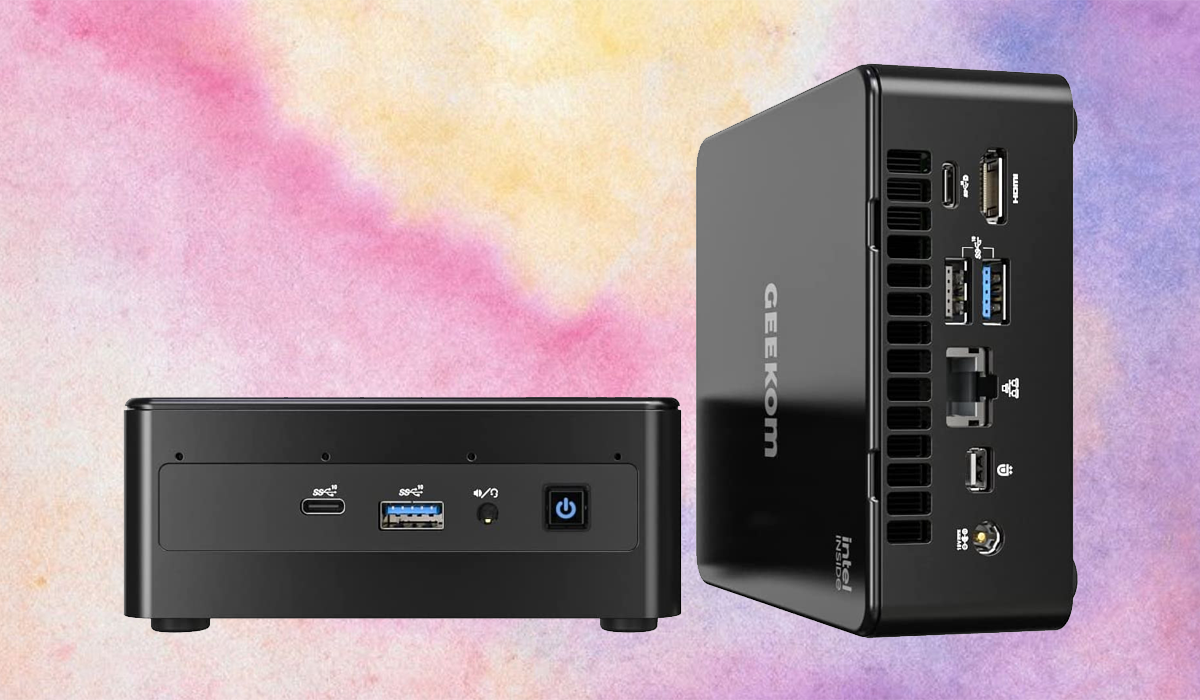The best laptops you can buy in 2023

What's the best laptop to buy? I get this question all the time, and the answer is quite different now than it was a decade ago — even five years ago. It starts with this: There's no one laptop brand that's markedly better than another. I know, I know... I'll give you a minute to absorb that.
This isn't as blasphemous as it sounds. The reality is, when it comes to getting your work done, it really doesn't matter if you choose Acer, Apple, Dell, HP, Lenovo, LG, Samsung or another major brand. They all make really good portable PCs, so it's hard to make a bad choice. (Whew! Relief, right?)
Instead, focus on the aspects that matter most: size, design, performance and, of course, price. Let's take a closer look at those attributes, then move onto my top laptop picks in various categories. These selections were made based on a number of criteria, including user ratings, professional reviews, price-to-performance ratio and, where possible, personal experience. (I managed to get hands-on time with several of the models listed below.)
First consideration: Size

Where is this laptop going to spend most of its time? On a desk? In your lap? No matter where you work, a bigger screen is always better — but the bigger you go, the heavier and bulkier your travel companion. If commuting or working offsite is part of your regular routine, choose a laptop that has a 13- or 14-inch screen and travel weight of under three pounds. If you're mostly working at your desk, however, it's worth considering a larger model; things like weight and battery life aren't nearly as important.
When you take that step up in size, you may also step up to a keyboard that includes a dedicated numeric keypad — useful if your work involves numbers (think: spreadsheets, financial docs, etc.).
Next consideration: Design

As you shop for laptops, you'll notice that some models (often referred to as 2-in-1s) boast a 360-degree hinge, meaning the screen can swivel around to accommodate other configurations — including a full-on tablet mode, which sounds great on paper but doesn't have as many practical applications as you might think.
Why? For starters, although Windows does have an app store, it offers only a fraction of the apps available for your Android tablet or iPad. But the real issue is size: A 10-inch tablet is light and comfortable enough to hold in one hand for long stretches of time, but a 13-inch that's hitched to a keyboard? Trust me: You won't like using it as a tablet.
I do like the option of using "tent mode" for watching videos. But even that's kind of superfluous; you can watch just as easily in the standard laptop configuration — and that makes it infinitely easier to type your Netflix search words, too.
My only real recommendation here is to decide whether a touchscreen is important. If you're accustomed to using a mouse anyway, it may not be. The touch capability can be nice at times, but it adds bulk, weight and cost to the machine. And you'll have to clean the screen more often owing to the fingerprints you'll leave behind.
Speaking of fingers, a backlit keyboard is a nice extra if you prefer (or are stuck with) a dimly lit workspace. And look for at least one USB-C expansion port, which will make it easier to work with newer peripherals and accessories.
Final consideration: Performance
In the old days, processor speed was arguably the single biggest consideration for any PC purchase. Now, they're all pretty fast, even at the lower end. When you consider that most modern computing takes place in a web browser, with occasional dips into apps like Word and Zoom, you don't need to worry too much about processor speed. An Intel Core i3 or i5 (or AMD's Ryzen equivalent) is more than sufficient for everyday tasks; choose a Core i7 only if your computing plans include gaming, massive spreadsheets and/or video editing.
Beyond that, take note of RAM — look for 8GB minimum, 16GB if your budget allows — and make absolutely sure the system has a solid-state drive (SSD), not a mechanical drive (HDD). The former makes a huge difference in terms of boot speed and overall performance. And the more RAM you have, the more apps and browser tabs you can keep open simultaneously without a performance hit.
I mentioned gaming; anyone serious about that hobby should look for a dedicated (aka discrete) graphics subsystem, or GPU. Check the specs for mention of Nvidia, the brand behind most of the dedicated GPUs found in modern laptops. If it's listed, the machine is well-suited to games.
Should you buy a mini-PC instead?

Once upon a time, you bought a laptop only when you needed to work on the go. Now they're the default pick, even with so many of us still working from home. But is it the best option? Would a desktop setup make more sense? Like anything, the features that make a machine the best laptop for one person aren't necessarily the same for you.
I'm not talking about one of those hulking tower-PC systems of yesteryear, which are now almost exclusively the domain of hardcore gamers, but rather a mini PC. Small enough to hold in your hand, these little machines pack ample horsepower for everyday computing.
Here's why I like them: My laptop is currently connected to a big-screen monitor and full-size keyboard, meaning it's the brains of my comfortable, largely permanent workstation. Honestly it just takes up space on my desk — and kind of adds to the clutter. A mini PC would be barely visible, especially if I mount it on the back of my monitor (which is an option with most models).
For example, the excellent Geekom IT8 starts at around $380 (sometimes less when there's a sale) and offers just as much computing horsepower as most mainstream laptops. It comes with Windows 11 and offers plenty of expandability, both inside and out.
Bottom line: If your workstation plans include a big monitor and keyboard, consider a mini-PC instead of a laptop. You might save money; you'll definitely cut down on a desktop clutter.
The best laptops for 2023
Ok, let's move on to my picks for the best laptops you can buy right now. Take note that prices were accurate at the time of this writing and are subject to change.
With its slim, colorful design, spacious screen and bundled 1-year Microsoft 365 subscription (itself a $70 value), Gateway's latest laptop seems like an impossibly good deal at only $229. And it absolutely is, though you'll need to take note of a few hardware considerations.
First, with its Intel Celeron processor and 4GB of RAM, the Ultra Slim won't win any speed races. It's fine for basic word processing, everyday web-based work and the like, but if you like to keep a dozen browser tabs open while juggling Zoom calls, this machine might start to feel sluggish.
Second, the 15.6-inch display is surprisingly large given the price, but the 1,366x768-pixel native resolution is on the low side. Although I found text and video sufficiently sharp for basic work, you may find it a little confining. Unfortunately, even if you connect an external monitor (the system does have an HDMI port), you can't run it any higher than the native resolution.
Finally, the Gateway lacks a numeric keypad, surprising given the size of the machine. The good news is that this allows for a very spacious keyboard, one that proved quite comfortable as well.
Available exclusively at Walmart in snazzy blue, green and red colors, the Ultra Slim features an impressive 128GB of storage, built-in stereo speakers and a Tuned by THX audio subsystem (meaning you should definitely break out your headphones for music and movie listening, because it's going to sound great). Gateway promises up to 8.5 hours of runtime from the battery.
I found the Ultra Slim's design surprisingly sturdy and elegant given the price; it looks and feels like something that costs a lot more. Consequently, right now I feel there's no other laptop that offers quite so much bang for the buck.
Sometimes a small feature can make a big difference. In the case of the new VAIO FE lineup, that feature is THX Spatial Audio. Available in three different VAIO FE14 models (which start at $699), this technology aims to give you a more theatrical listening experience, to make music and movies sound like they're surrounding you. That's a nice addition for anyone who likes to stream Spotify, Netflix and the like. And it works in games, too, handy for those times when you need to hear if zombies are sneaking up from behind.
Honestly, that's just icing on the cake of what is an overall rock-solid laptop. I recommend choosing the $799 configuration, which nets you an Intel Core i5 processor, 16GB of RAM, a 1TB SSD and a 14.1-inch FHD (aka 1,920 x 1,080) screen. If you choose the $699 model, you'll get just half the RAM and storage. Either way, the system weighs 3.5 pounds and comes in your choice of black, silver or rose gold.
I like a lot of the little touches included here, like the fingerprint scanner, the privacy shutter atop the 2-megapixel webcam, the keyboard with two levels of backlighting, the four USB ports (one of them USB-C) and the Ethernet port — this last an increasingly rare feature, but essential to those who need wired connectivity.
The integrated Intel Iris XE graphics subsystem provides decent performance for games and video, though not on the level of a discrete GPU. If you're a casual gamer or your work includes basic photo editing, I suspect you'll find the FE14 more than sufficiently powerful.
I did find the system a little on the noisy side, especially when the fan kicks on — which happened more often than I'd have liked. But if you're listening to music or a movie, you probably won't hear it. Indeed, the FE14's speakers sound better than most, no doubt aided by the THX subsystem.
Laptop shoppers often overlook the audio part of the equation. If that's important to you, the VAIO FE14 definitely deserves a look — and a listen.
Best gaming laptop
Gamers have very different needs than work-from-homers: Big screen, lots of storage and processing power and so on. The MSI GE76 Raider ticks all the important boxes, starting with the raw speed needed to keep games running smoothly at the highest resolutions. To that end it packs an 11th-generation Intel Core i7 processor, 16GB of RAM, a 1TB solid-state drive and Nvidia's RTX 3060 GPU. And because bigger is always better when it comes to gaming, the screen spans a massive 17.3 inches.
That screen tops out at 1080p resolution, but if you want to get crazy, you could plug in an external 4K monitor; the Core i7 and RTX 3060 can handle the extra pixels, no problem. The latter comes with a hefty 6GB of dedicated video RAM, on par with what you'd find on modern desktop video cards. And the 300Hz screen refresh rate rivals any gaming-minded monitor; standard ones top out at just 60Hz.
Unsurprisingly, this is a big, heavy machine (6.4 pounds), one designed not for backpacks but for basements and game rooms. Thankfully, it's also designed for pizazz: A color-changing LED light bar spans the entire front edge, and the keyboard backlights to match (though you can also customize it on a per-key basis, which is pretty cool).
Finally, the Raider serves up ample expansion ports along the sides and rear edge: Five USB, one HDMI, one mini Displayport and an Ethernet jack. It's the rare gamer who'd need anything more.
Although I didn't get the chance to test the Raider, it earned top marks from customers and reviewers alike. One item worth noting: Several customers indicated that the system runs hot and produces a fair amount of fan noise (not uncommon in gaming laptops).
Because the GE76 is a little over a year old, you may be able to find a sale as newer models arrive to take its place. In just the past couple months, for example, the price has dipped to around $1,400. For anyone serious about gaming, it's well worth it.
If you're concerned about the materials used to make your laptop — both what they are and where they came from — look to Apple's MacBook lineup. The company has made impressive commitments to energy efficiency, recycled materials and overall environmental friendliness.
For example, all MacBooks are free of mercury, arsenic, brominated flame retardants and PVC plastic. And Apple itself has pledged to be a 100% clean-energy company by 2030. Needless to say, choosing a MacBook helps support that mission.
Of course, there are other reasons: MacBooks are widely regarded as some of the best laptops you can buy, notable for their rock-solid construction, virus-resistant operating system and unrivaled customer support. The 2022 Pro models feature blazing-fast processors, backlit keyboards, amazing battery life (up to 20 hours, according to Apple) and Apple's dazzling Retina displays.
If you're coming from the Windows world, however, be prepared to battle a small to medium-size learning curve, as Mac OS definitely works a little differently. You should also brace for the "Apple Tax," as the MacBook Pro lineup (normally) starts at $1,299 and rises sharply from there.
A Chromebook is simply a laptop that runs Google's Android-like Chrome operating system instead of Windows. Is that the right choice for you? Lenovo's IdeaPad Duet 5 certainly makes a strong case. It's one of the most versatile, affordable laptops on this list.
For starters, the Duet 5 features a 13.3-inch FHD OLED touchscreen — plenty big and bright for working in comfort, and accompanied by a full-size keyboard. (Beware smaller Chromebooks, which are likely to have cramped keys.) But here's the kicker: That keyboard is detachable, meaning the Duet — true to it name — is also a tablet. A big one. One that can run Android apps, just like phones.
Indeed, this isn't a mere parlor trick; the screen effectively becomes a full-fledged Android tablet, one equipped with front and rear cameras, four speakers, two microphones and a battery that's good for up to 15 hours (according to Lenovo). It also has a built-in kickstand, so you can easily prop it up for movies, video calls and so on. Feeling creative? The screen supports stylus input as well, though you'll have to buy that separately. (Here's a rechargeable, pressure-sensitive Chromebook pen for $44.)
The Duet 5 is available in a few different configurations; this one includes 8GB of RAM and 128GB of storage — quite a lot for a Chromebook. And unlike most 2-in-1 laptops, this is actually on the lighter side at 2.2 pounds.
Given its shared DNA with modern smartphones, the Duet 5 does carry a few similar limitations. For example, it lacks a headphone jack. It has Bluetooth, of course, but if you prefer to plug in your favorite wired 'phones, you're out of luck. It also lacks an SD or microSD memory-card slot, though it does have a pair of USB-C ports for use with external drives and such.
If you're in the market for a Chromebook rather than a Windows laptop or MacBook, the IdeaPad Duet 5 is definitely one to consider.
